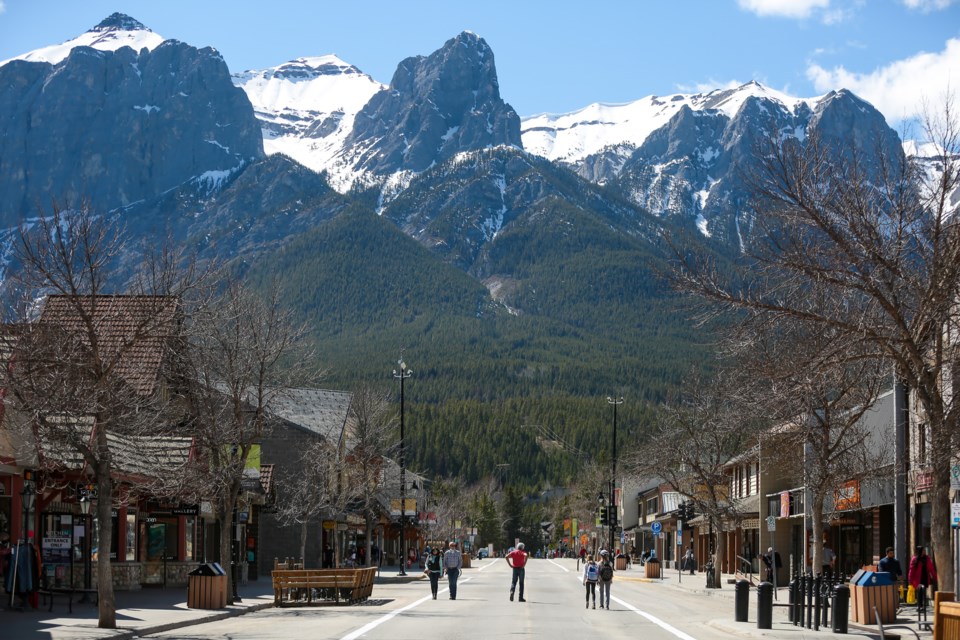BOW VALLEY – A new study is aiming to get feedback on how Albertans recreate outdoors on Crown land in an effort to gauge the economic impact it makes regionally and across the province.
The survey is being run by the Tourism Industry Association of Alberta, a not-for-profit advocacy group, and aid of creating a better understanding the economic roles Crown land has in the province.
In the past, individual economic studies have been done. However, this serves to be the first study to focus on the outdoor recreation aspect of Crown land, said Darren Reeder, a TIAA board advisor.
“It’s one of our greatest opportunities as a province to grow tourism, and not just grow tourism, but to grow it in a sustainable manner,” he said. “When you look at the availability of landscape, it's not really this notion that we can build resorts in every corner of the province. It's about the idea that each area is geographically unique, the biodiversity within that region is worth conserving and celebrating and sharing. You enhance people's attitudes towards conservation when you experience these things.”
Crown lands are part of the protected parks and lands under the Public Lands Act and comprise about 60 per cent of the province.
The lands can serve a multitude of purposes from outdoor recreation to helping conservation or exercising Indigenous treaty rights, tourism and resource-based industries.
“It is some of the most beautiful protected lands from a biodiversity perspective, some of the most incredible landscapes we have to share with people,” Reeder said. “The question then becomes what are our values and how would we choose to use the area.”
He noted government policy framework to support and attract investment on Crown lands has not always had a solid “enabling policy framework,” but recent years have seen a change.
In the past, an investor may begin with an idea, but there wasn’t a predictable path through the province to have a commercial assessment completed, or have staff to follow through the process. He said that lack of certainty has led to investors fleeing for other provinces where the process was more standardized.
“Some of the greatest opportunities for future economic development are going to be how we can introduce people to the landscape, how they can use Crown lands on a seasonal basis or a four season basis to create new business opportunities," Reeder said.
“This is not necessarily about big built infrastructure opportunities, this is about people that outfit and guide in very diverse geographical areas of the province at different seasons of the year,” he added, giving ideas such as canoe expeditions, climbing, hiking and snowmobiling as examples.
The TIAA has been advocating for a greater understanding of the economic impact of outdoor recreation on Crown lands. The organization released a report last year – Call to Action Report: Recommendations to Accelerate the Recovery, Sustainable Growth and Resilience of Alberta’s Visitor Economy – and the study is part of the overall strategy.
The group is working in partnership with the province and Travel Alberta to help the goal announced in the last provincial budget of doubling the tourism economy in Alberta to $20 billion a year by 2030.
Invest Alberta, a Crown corporation dedicated to attracting investment to the province, has stated tourism contributes about $8 billion annually in revenue and more than 36 million visitors.
A 2018 Statistics Canada Travel Survey of Residents of Canada study echoed those numbers that there was $8.2 billion spent on tourism and 35.2 million visits.
Travel Alberta estimates there are roughly 68,800 tourism-based jobs in Alberta during 2018 and roughly 20,000 tourism-related businesses.
While tourism helps people see some of the beautiful areas Canada has to offer, the province also collects a hefty levy on revenues earned by hotels and other lodgings. In 2019, the Alberta government received $89 million from a hotel levy. There were estimating to collect $92 million in 2020, but only received $25 million following an abatement during the pandemic to allow the affected businesses keep the revenue.
Though tourists have still trickled into the Bow Valley and increased vaccinations have brought a light at the end of the tunnel, it’s not expected for the levy to return to $92 million until 2023-24.
“This idea of introducing people to place the culture and the heritage and the natural geography of a region is something every community has as part of its history. It has generations of storytellers and people know how to lead outfitting expeditions, going hunting, wanting to go for a backcountry hiking experience or camp in the backcountry,” Reeder said. “There are scalable economic development opportunities by virtually every community and land base in the province and we can do these things at scale in a way that are sustainable.”
Reeder, the former CEO of the Alberta Chamber of Commerce and executive director of the Banff and Lake Louise Hospitality Association for more than a decade, said the study is intended to be complete and released this summer.
While in the same timeframe of the recent decisions and policy changes on coal development on Crown land, the survey was planned before the provincial announcements. Reeder also said a goal is to develop a strategic policy advocacy document to help outdoor recreation and the visitor economy.
“What we hope to learn at the end of the day is on a broad level basis when we look across the whole of the province, we have a sense of the kind of visitor that recreates in the different land regions, what they hope to do on those areas or what they have done. Then we can see what the contributed economic impact of the region has been of that activity both the direct, indirect and induced aspects of that.”
People can visit http://s.alchemer-ca.com/s3/efcf041bdcc3 to participate in the survey.
Read more from RMOToday.com



